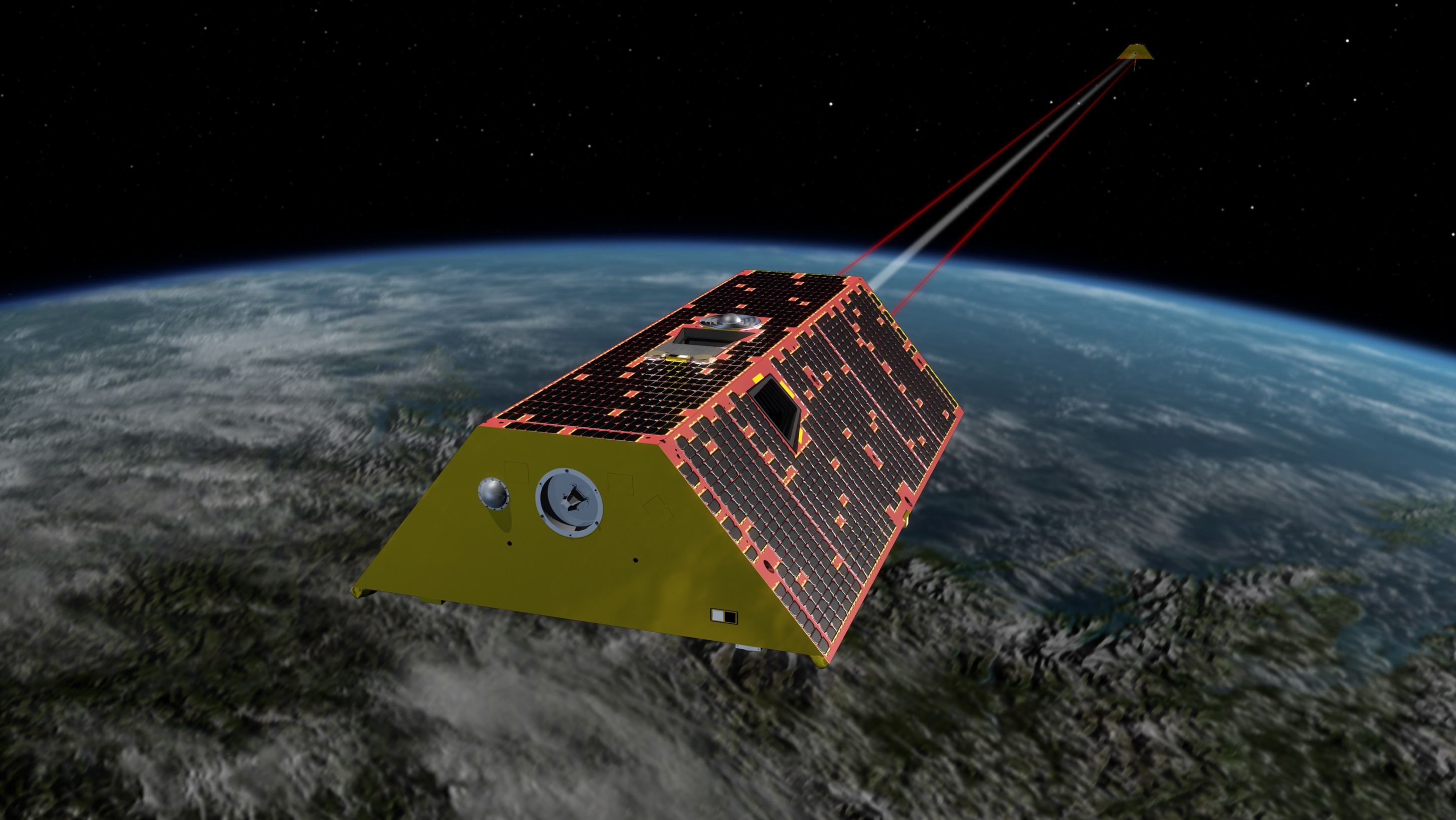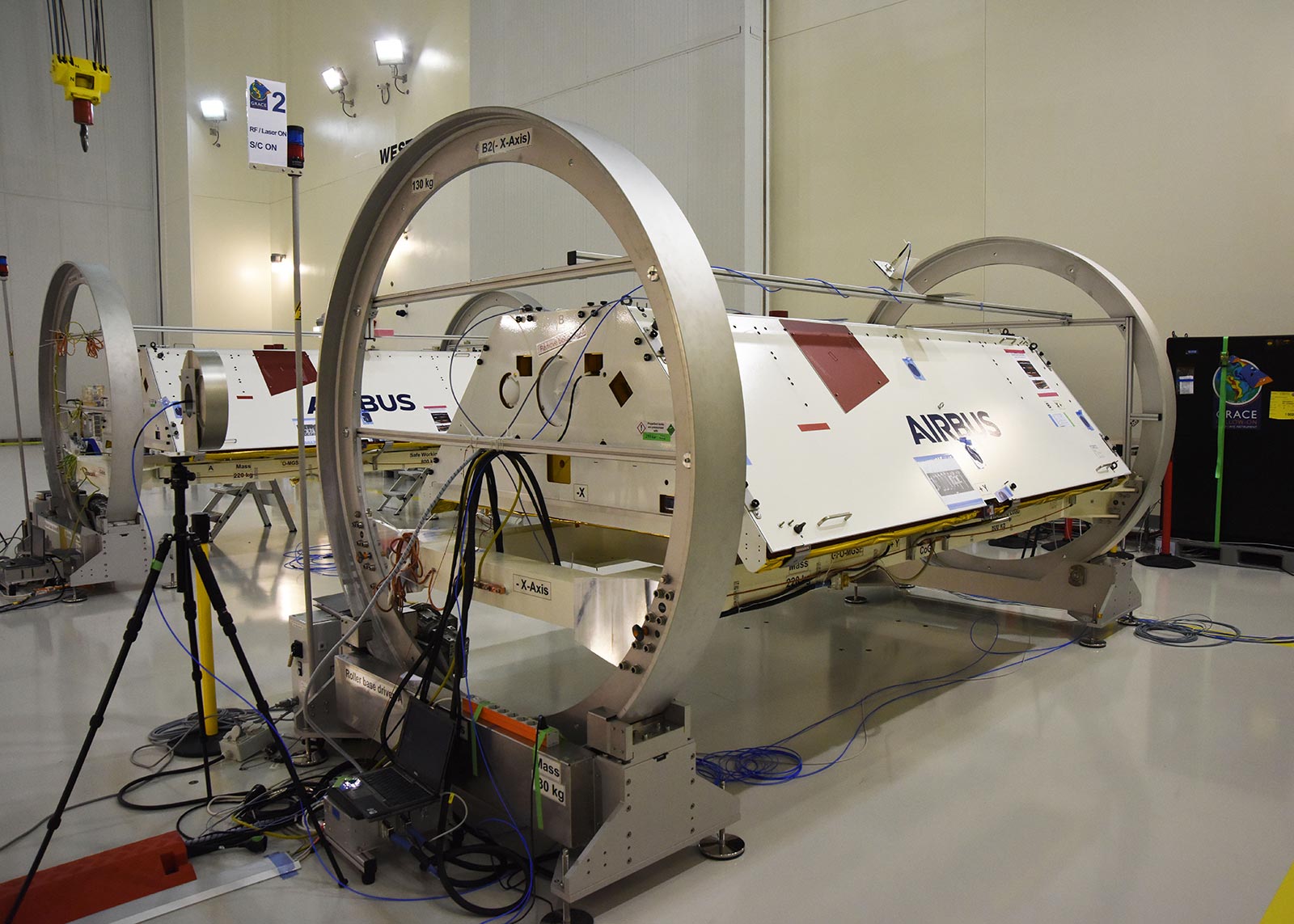
How Twin NASA Satellites Will Track Changes in Earth's Water and Ice
NASA is gearing up for the upcoming launch of its Gravity Recovery and Climate Experiment Follow-On (GRACE-FO) mission, which will map changes in water and ice around the world by detecting variations in Earth's gravity.
The mission involves two identical spacecraft that will orbit the Earth in tandem. The satellites are currently scheduled to lift off from Vandenberg Air Force Base in California atop a SpaceX Falcon 9 rocket on May 19 at 4:03 p.m. EDT (2003 GMT). After deploying the GRACE-FO satellites 305 miles (490 kilometers) above the Earth, the Falcon 9 will deliver five Iridium Next communications satellites into a slightly higher orbit, NASA officials said in a statement.
As the name implies, GRACE-FO is a follow-on mission to the original GRACE mission, which mapped Earth's gravity field from 2002 to 2017. Both missions are joint projects between NASA and the GFZ German Research Center for Geosciences in Potsdam, Germany. After the first GRACE mission operated well beyond its planned five-year life span, the spacecraft's batteries eventually succumbed to their age, and the mission came to an end. With two new and improved iterations of the GRACE spacecraft, however, researchers will soon be able to pick up where they left off. [2 Satellites Will Probe Earth's Massive Ice Sheets (Video)]

During the 15-year GRACE mission, scientists "found significant changes in every part of the world," Michael Watkins, lead scientist for GRACE-FO and director of NASA's Jet Propulsion Laboratory in Pasadena, California, said during a briefing on Monday (April 30). One of the most significant findings was the extent to which the melting of Earth's polar ice caps has contributed to rising sea levels, Watkins said.
As that ice melts — whether the water becomes a part of the ocean or seeps into the soil — it changes how mass is distributed on our planet. And when Earth's mass distribution changes, so does its gravity field. By measuring those changes, the GRACE missions can track Earth's water cycle and how climate change affects oceans, glaciers, sea ice, groundwater and even moisture in the atmosphere.
To detect these gravitational changes, the twin spacecraft will fly about 137 miles (220 km) apart and send microwave signals back and forth. When they pass over a region where gravity increases or decreases, the distance between the two spacecraft will change slightly, allowing the satellites to map Earth's gravity field. In other words, GRACE-FO will map Earth's water movements "by actually measuring the weight of the water," Watkins said.

Get the Space.com Newsletter
Breaking space news, the latest updates on rocket launches, skywatching events and more!
Although the two GRACE-FO spacecraft are very similar to those used in the previous GRACE mission, they will carry one new piece of equipment: the experimental Laser Ranging Interferometer. If this new technology works as planned, it could provide measurements up to 10 times more accurate than the microwave measurements, NASA officials said.
Email Hanneke Weitering at hweitering@space.com or follow her @hannekescience. Follow us @Spacedotcom, Facebook and Google+. Original article on Space.com.
Join our Space Forums to keep talking space on the latest missions, night sky and more! And if you have a news tip, correction or comment, let us know at: community@space.com.

Hanneke Weitering is a multimedia journalist in the Pacific Northwest reporting on the future of aviation at FutureFlight.aero and Aviation International News and was previously the Editor for Spaceflight and Astronomy news here at Space.com. As an editor with over 10 years of experience in science journalism she has previously written for Scholastic Classroom Magazines, MedPage Today and The Joint Institute for Computational Sciences at Oak Ridge National Laboratory. After studying physics at the University of Tennessee in her hometown of Knoxville, she earned her graduate degree in Science, Health and Environmental Reporting (SHERP) from New York University. Hanneke joined the Space.com team in 2016 as a staff writer and producer, covering topics including spaceflight and astronomy. She currently lives in Seattle, home of the Space Needle, with her cat and two snakes. In her spare time, Hanneke enjoys exploring the Rocky Mountains, basking in nature and looking for dark skies to gaze at the cosmos.









